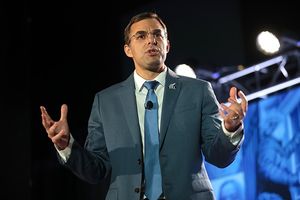Who are they, and what do they stand for?
I’m Isaac Saul, and this is Tangle: an independent, ad-free, subscriber-supported politics newsletter that summarizes the best arguments from across the political spectrum on the news of the day — then “my take.”
First time reading? Sign up here. Today is a Friday edition for subscribers only.
Today's read: 7 minutes
In the United States, the desire for a third political party has never been higher.
In 2021, Gallup found that 62% of American adults say that the "parties do such a poor job representing the American people that a third party is needed." That's the highest percentage on record for Gallup’s question, dating back to 2003.
Anecdotally, momentum for a powerful third party in American politics also seems to be growing. Perry Bacon at the Washington Post recently described how the U.S. has "four political parties" stuffed into a two-party system. George Packer similarly described the “Four Americas” within American political culture in The Atlantic. The historian Bernard Tamas has made the case that third parties can help rein in the extremism of today's politics.
While so many Americans say a third party is needed, the funny thing is that many already exist. And have for many years. Throughout American history, third parties have thrived when the major parties are polarized, and our major parties have rarely been more polarized than they are now. As Tamas has written, third parties like the Greenback Party in the 1870s and The Populist Party in the 1890s had serious success disrupting the duopoly in America. Back then, they rode widespread support from poor farmers by opposing business monopolies.
More recently, in the 1992 presidential election, Ross Perot famously received 18.9% of the vote running as a Reform Party candidate. In 1996 he won 8.4% of the popular vote. Throughout the 2000s and 2010s, around 50% of U.S. House districts had third party candidates running in them. In 2016, the number of people who voted third-party was greater than the popular vote gap between President Trump and Hillary Clinton. In 2020, third parties lost some ground, but there's good reason to believe they'll have a pivotal role in 2024. Former Democratic candidate Andrew Yang, for example, is even launching his own Forward Party.
Given that there is such a thirst among Americans for an alternative to Democrats and Republicans, and given that many alternatives already exist, today I thought it'd be fun to take a look at some of the largest and most influential third parties in the U.S.
Independent / unaffiliated.
First, it should be noted that there are plenty of independent or unaffiliated candidates who run in the U.S.


